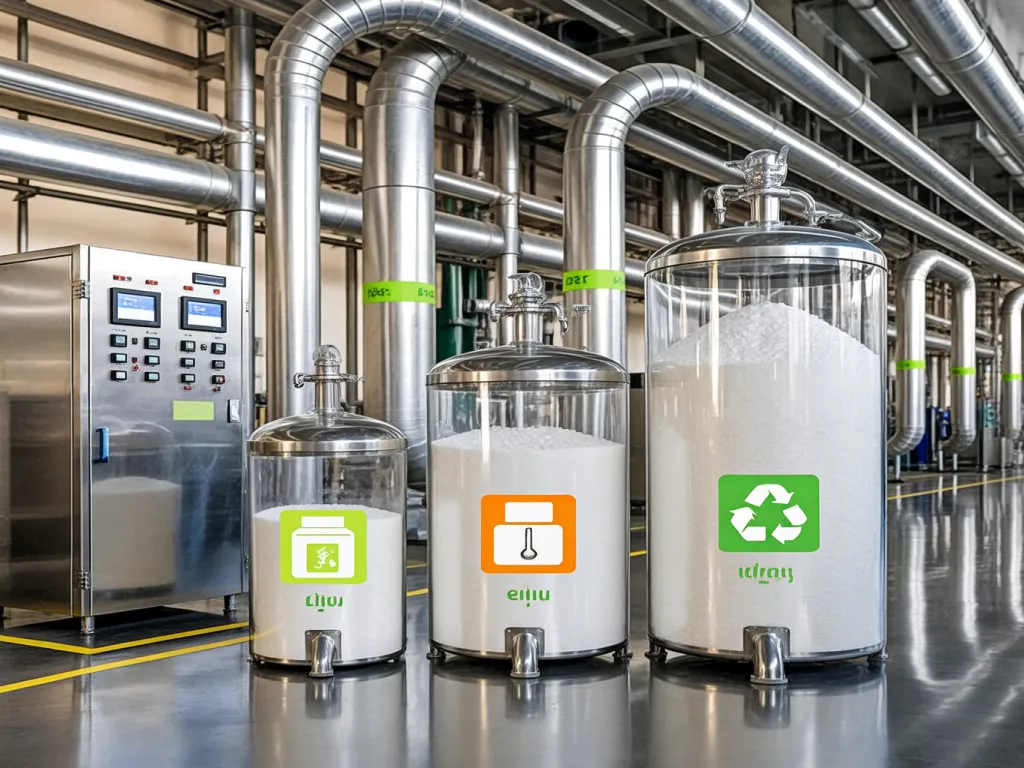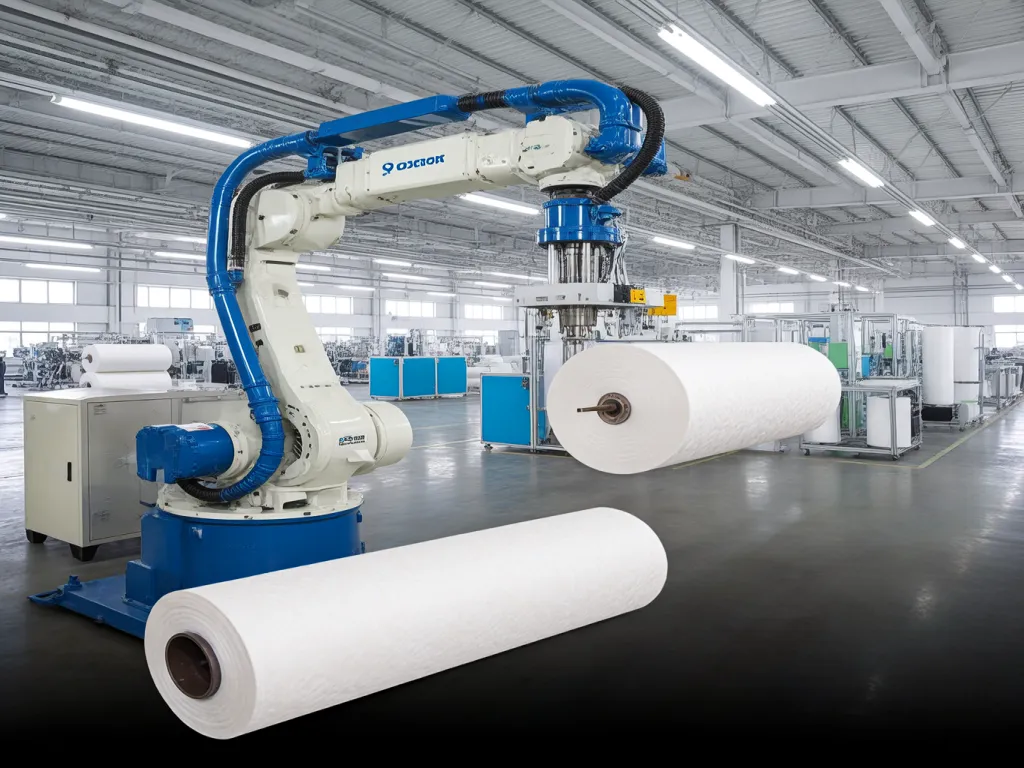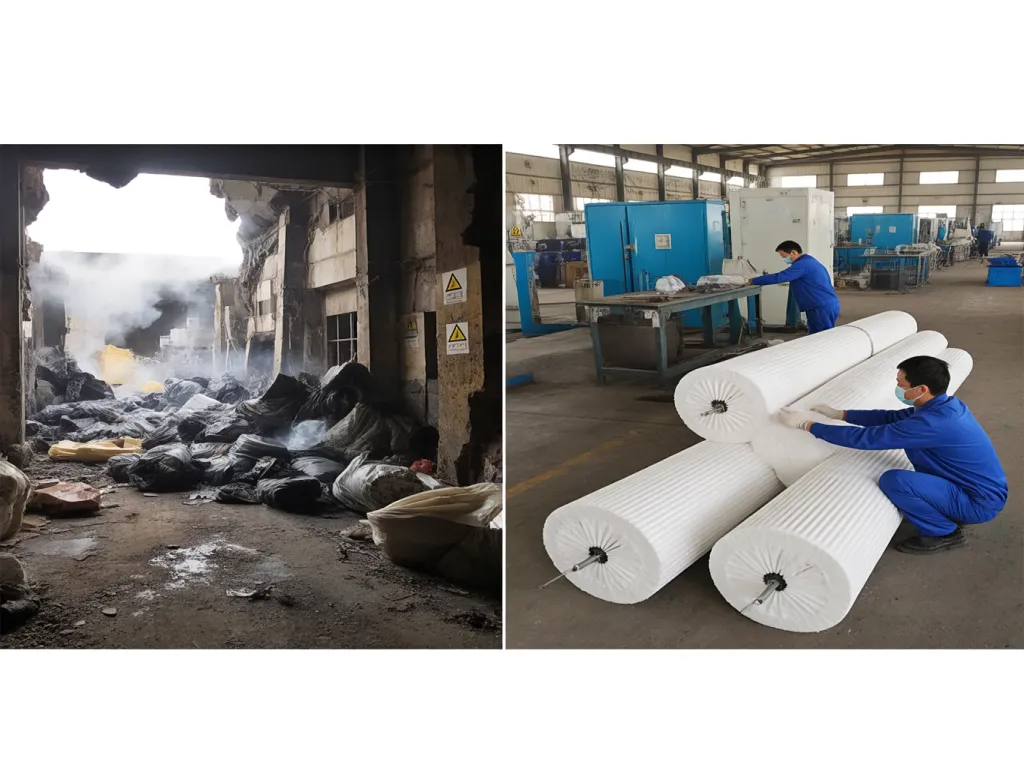Durable Filter Bags: Your Industrial Manufacturer Guide

When it comes to industrial filtration, the choice of filter bags can make or break your system’s efficiency. As a filter bags manufacturer for industrial use, we understand the critical role that material durability plays in maintaining seamless operations. But with so many options out there—polyester, polypropylene, aramid—how do you know which material will truly stand the test of time in your specific environment? Let’s dive deep into the science of filter bag longevity and uncover what really sets top manufacturers apart.

Material Types and Durability: Analyzing Polyester, Polypropylene, Aramid, and Other Common Filter Bag Materials
When it comes to industrial filter bags, the choice of material can make or break the efficiency and longevity of your filtration system. So, how do you decide which filter bag material is best for your needs? Let’s dive into the nitty-gritty of polyester, polypropylene, and aramid filter bags, exploring their chemical resistance, heat tolerance, and abrasion durability. First up, polyester filter bags. Polyester is a workhorse in the industrial filtration world, thanks to its excellent chemical resistance. It can handle a wide range of acids and bases, making it a go-to for many chemical processing applications. But what about heat? Polyester can withstand temperatures up to around 130°C (266°F), which is sufficient for most standard industrial processes. However, when it comes to abrasion, polyester holds its own pretty well, though it may not be the top choice for highly abrasive environments. Now, let’s talk about polypropylene filter bags. Polypropylene is another popular choice, especially in industries where chemical resistance is paramount. It can resist most acids and alkalis, except for strong oxidizing agents. Where polypropylene really shines, though, is in its heat tolerance. It can handle temperatures up to around 90°C (194°F), which is lower than polyester but still suitable for many applications. The real kicker with polypropylene is its excellent resistance to abrasion. If your process involves a lot of particulate matter that could wear down your filter bags, polypropylene might be your best bet. Finally, we have aramid filter bags. Aramid, often known by its trade name Kevlar, is the superhero of filter bag materials when it comes to heat resistance. It can withstand temperatures up to a whopping 204°C (400°F), making it ideal for high-temperature applications like cement kilns and power plants. But aramid isn’t just about heat; it also boasts impressive chemical resistance and abrasion durability. The downside? Aramid filter bags can be more expensive than their polyester and polypropylene counterparts. So, how do these materials stack up in real-world industrial environments? Polyester is a great all-rounder, offering a balance of chemical resistance, heat tolerance, and abrasion durability at a reasonable cost. Polypropylene excels in chemically aggressive environments and where abrasion is a concern, though its lower heat tolerance limits its use in some high-temperature processes. Aramid, on the other hand, is the go-to for extreme conditions, offering unmatched heat resistance and durability, albeit at a higher price point. Choosing the right filter bag material for your industrial use isn’t just about the specs on paper; it’s about understanding your specific process needs. Are you dealing with harsh chemicals? High temperatures? Abrasive particulates? By matching your filter bag material to your process conditions, you can ensure optimal performance and longevity, saving you time and money in the long run. So, next time you’re in the market for industrial filter bags, remember: it’s not just about finding a ‘durable filter bag’ – it’s about finding the right durable filter bag for your unique industrial use.
Polyester: The Versatile Choice
Polyester filter bags are a staple in many industrial settings due to their versatility. They offer good resistance to a broad spectrum of chemicals, making them suitable for a variety of applications. Their moderate heat tolerance allows them to function effectively in most standard industrial processes without breaking down. Additionally, polyester’s resistance to abrasion, while not the highest, is adequate for many environments, striking a balance between performance and cost.
Polypropylene: Chemical Resistance Champion
Polypropylene filter bags are the champions of chemical resistance, capable of withstanding most acids and alkalis. This makes them ideal for industries where chemical exposure is a constant concern. Although their heat tolerance is lower compared to polyester, they still perform well in many industrial settings. The standout feature of polypropylene is its exceptional resistance to abrasion, making it the preferred choice for processes involving high levels of particulate matter.
Aramid: The High-Temperature Hero
Aramid filter bags, known for their heat resistance, are the heroes in high-temperature industrial environments. They can endure temperatures much higher than polyester and polypropylene, making them indispensable in sectors like cement production and power generation. Alongside their heat resistance, aramid bags also offer excellent chemical and abrasion resistance. However, their premium performance comes at a higher cost, making them a more specialized choice.

Manufacturer’s Craftsmanship Impact on Durability: Exploring How Manufacturing Processes, Such as Needling Density and Post-Treatment Techniques, Affect the Physical Strength and Lifespan of Filter Bags
When it comes to industrial filter bags, the manufacturer’s craftsmanship isn’t just about creating a product; it’s about crafting a solution that stands the test of time and harsh industrial environments. You might be wondering, ‘How exactly do these manufacturing processes influence the durability of filter bags?’ Well, let’s dive into the nitty-gritty details of needling density and post-treatment techniques to uncover their profound impact.
First off, needling density plays a pivotal role in determining the physical strength of filter bags. Imagine the fibers of a filter bag as a tightly woven net. The more needles used per square inch during the manufacturing process, the denser and stronger this net becomes. This increased density not only enhances the bag’s ability to withstand high pressures and mechanical stresses but also improves its filtration efficiency. Why? Because a denser fabric structure traps more particles, preventing them from passing through and potentially clogging your system. But here’s the catch: too much needling can make the fabric too stiff, reducing its flexibility and making it prone to cracking under extreme conditions. So, it’s a delicate balance that manufacturers must strike to ensure optimal performance.
Now, let’s talk about post-treatment techniques. These are the finishing touches that can make or break the durability of your filter bags. One common post-treatment method is calendering, where the fabric is passed between heated rollers to smooth out the surface and increase its density. This process not only enhances the bag’s aesthetic appeal but also improves its resistance to abrasion and wear. Another technique is singeing, which involves burning off the loose fibers on the surface of the fabric. This might sound counterintuitive, but it actually reduces the likelihood of fiber shedding during operation, thereby extending the bag’s lifespan.
But wait, there’s more! Some manufacturers go the extra mile by applying coatings or laminates to the filter bags. These additional layers act as a barrier against chemicals, moisture, and even UV radiation, depending on the specific coating used. For instance, a PTFE (Polytetrafluoroethylene) coating can provide excellent chemical resistance and low friction properties, making it ideal for applications involving corrosive substances or high-temperature environments. On the other hand, a polyurethane coating might be preferred for its flexibility and abrasion resistance in more dynamic settings.
You might be thinking, ‘How do I know which post-treatment technique is right for my application?’ Well, that’s where understanding your specific industrial needs comes into play. Are you dealing with high temperatures, corrosive chemicals, or abrasive particles? Each scenario demands a different approach to ensure the filter bag can withstand the rigors of your environment. And that’s exactly why choosing a manufacturer who understands these nuances and can tailor their processes accordingly is crucial.
In essence, the manufacturer’s craftsmanship in terms of needling density and post-treatment techniques is a game-changer when it comes to the durability of industrial filter bags. It’s not just about making a bag; it’s about crafting a resilient, high-performing solution that keeps your industrial operations running smoothly. So, the next time you’re in the market for filter bags, don’t just settle for any manufacturer. Look for one who prioritizes craftsmanship and understands the intricate balance between strength, flexibility, and resistance to ensure your filter bags stand the test of time.
The Science Behind Needling Density
Needling density isn’t just a number; it’s a science that directly impacts the structural integrity of filter bags. By varying the number of needles used per square inch, manufacturers can control the tightness and strength of the fabric. This process is akin to knitting a sweater with different needle sizes – the tighter the knit, the more durable and warm the sweater. Similarly, a higher needling density results in a stronger, more resilient filter bag that can withstand the rigors of industrial use.
Post-Treatment Techniques: Enhancing Durability
Post-treatment techniques are the unsung heroes of filter bag manufacturing. They transform a basic fabric into a high-performance filtration solution. Calendering, singeing, and coating are just a few of the methods used to enhance the bag’s durability. Each technique serves a specific purpose, whether it’s smoothing the surface, reducing fiber shedding, or providing protection against chemicals and moisture. By carefully selecting and applying these techniques, manufacturers can create filter bags that excel in even the most demanding industrial environments.

Case Study Analysis: Success and Failure in Industrial Filter Bag Applications
When it comes to industrial filter bags, the choice of material can make or break your filtration system’s efficiency and longevity. Let’s dive into real-world examples where material selection played a pivotal role, highlighting both the pitfalls of poor choices and the benefits of getting it right. Imagine a chemical processing plant that opted for standard polyester filter bags to handle corrosive gases. Initially, the cost savings seemed appealing. But within months, the bags began to degrade rapidly, leading to frequent replacements and unexpected downtime. The corrosive environment had simply outmatched the polyester’s chemical resistance. This not only increased operational costs but also posed safety risks due to potential leaks. Now, contrast this with a power plant that invested in high-quality aramid filter bags for their coal-fired boilers. Aramid, known for its exceptional heat resistance and durability, proved to be the perfect fit. Despite the harsh conditions, these bags lasted significantly longer than their polyester counterparts, reducing maintenance costs and ensuring uninterrupted operation. The initial higher investment paid off handsomely in the long run. But why did these outcomes differ so drastically? It boils down to understanding the specific demands of your industrial environment. For instance, in high-temperature applications, materials like aramid or PTFE (polytetrafluoroethylene) shine due to their thermal stability. Conversely, in environments with high moisture or chemical exposure, polypropylene or specialized coated fabrics might be more suitable. Let’s not forget about the importance of proper bag design and construction. Even the best material can underperform if the bag’s structure doesn’t complement its properties. Seam strength, pleat design, and surface treatments all play a role in how well a filter bag performs over time. So, how can you avoid the mistakes seen in the chemical plant example? Start by conducting a thorough assessment of your operational conditions. What temperatures will the bags face? What chemicals or particulates are present? How often will the bags need to be cleaned or replaced? Answering these questions will guide you toward the right material choice. Additionally, consider the total cost of ownership rather than just the upfront price. A cheaper bag might seem attractive initially, but if it requires frequent replacements or leads to system failures, the long-term costs can skyrocket. In conclusion, the success or failure of industrial filter bag applications hinges on material selection. By understanding your specific needs and choosing materials that can withstand your operational conditions, you can ensure efficient, reliable filtration for years to come. Don’t let short-term savings blind you to the long-term benefits of investing in quality.
The Chemical Plant Disaster: Polyester’s Downfall
The chemical processing plant’s decision to use standard polyester filter bags in a corrosive environment serves as a cautionary tale. Polyester, while versatile, lacks the chemical resistance needed for such harsh conditions. The result? Rapid degradation, frequent replacements, and increased operational costs. This example underscores the importance of matching material properties to environmental demands.
The Power Plant Triumph: Aramid’s Resilience
In stark contrast, the power plant’s choice of aramid filter bags for their coal-fired boilers proved to be a wise investment. Aramid’s exceptional heat resistance and durability allowed the bags to withstand the rigorous conditions, resulting in longer service life and reduced maintenance costs. This success story highlights the benefits of selecting materials tailored to specific industrial challenges.
Beyond Material: The Role of Design and Construction
While material selection is crucial, it’s not the only factor influencing filter bag performance. Proper design and construction, including seam strength, pleat design, and surface treatments, are equally important. A well-designed bag made from the right material will outperform a poorly constructed one, even if the latter uses a superior material. Thus, a holistic approach to filter bag selection is essential.
Selecting the right filter bags manufacturer for industrial use isn’t just about specifications—it’s about understanding how material science and manufacturing precision combine to create products that truly endure. As we’ve explored, even minor differences in material composition or stitching techniques can lead to dramatically different performance outcomes. Ready to transform your filtration system’s reliability? Take our material durability comparison checklist and start evaluating manufacturers through the lens of long-term value. The next breakthrough in your industrial efficiency might just be a material choice away.
